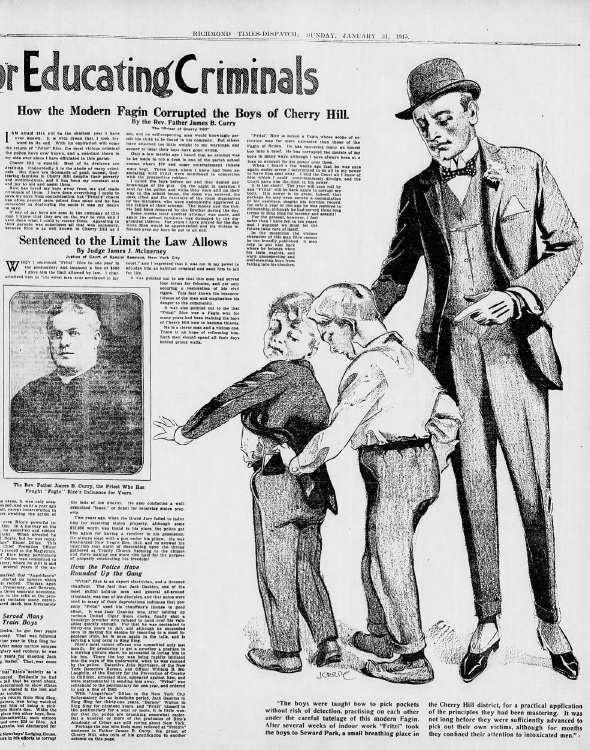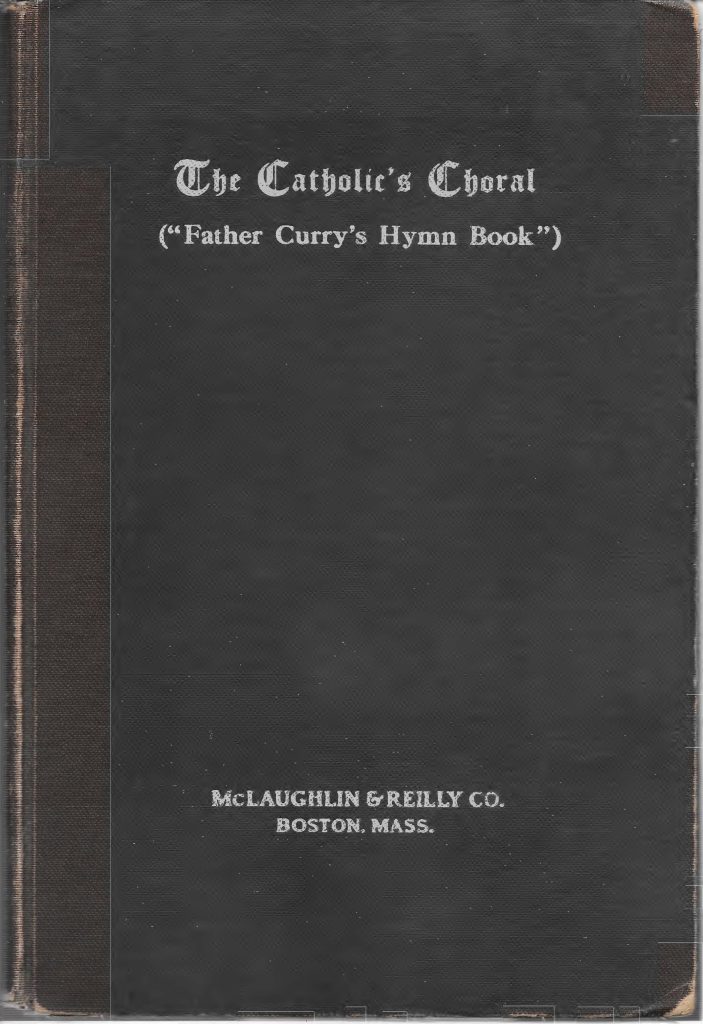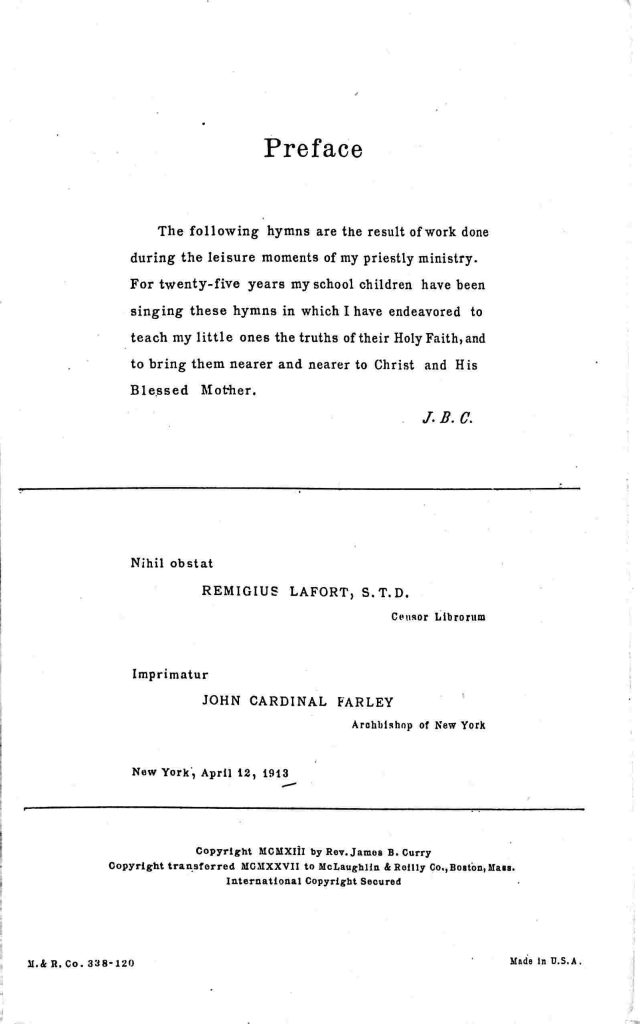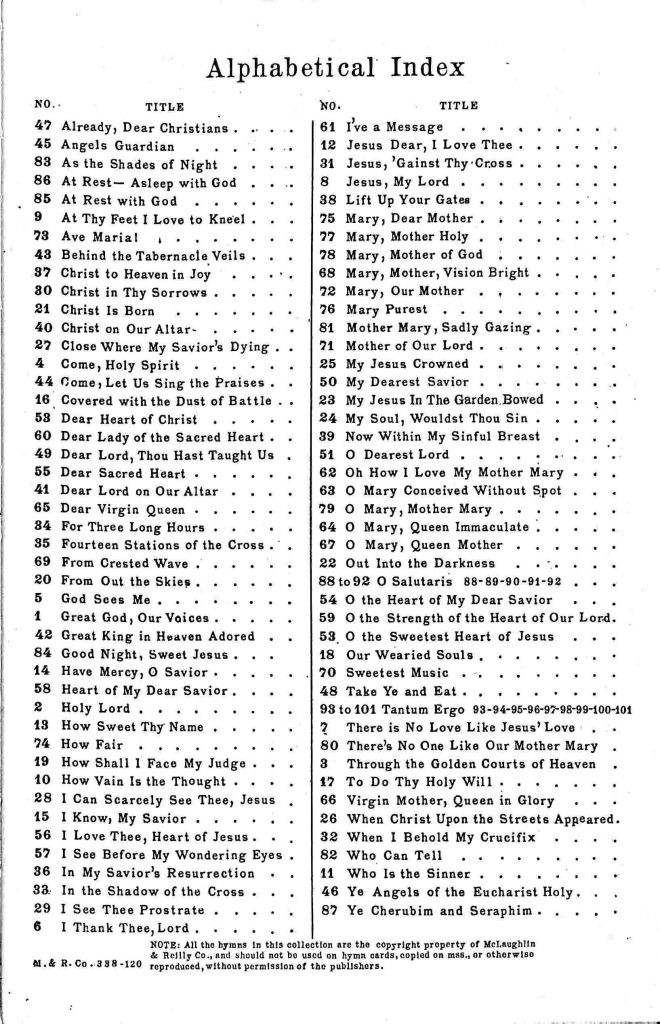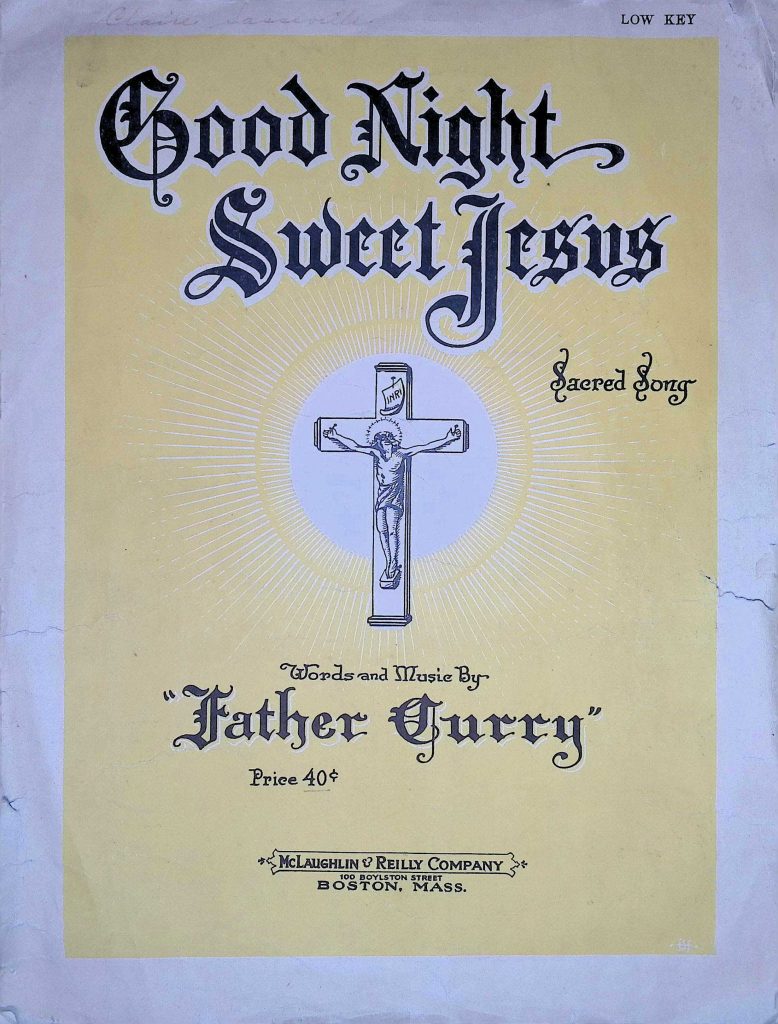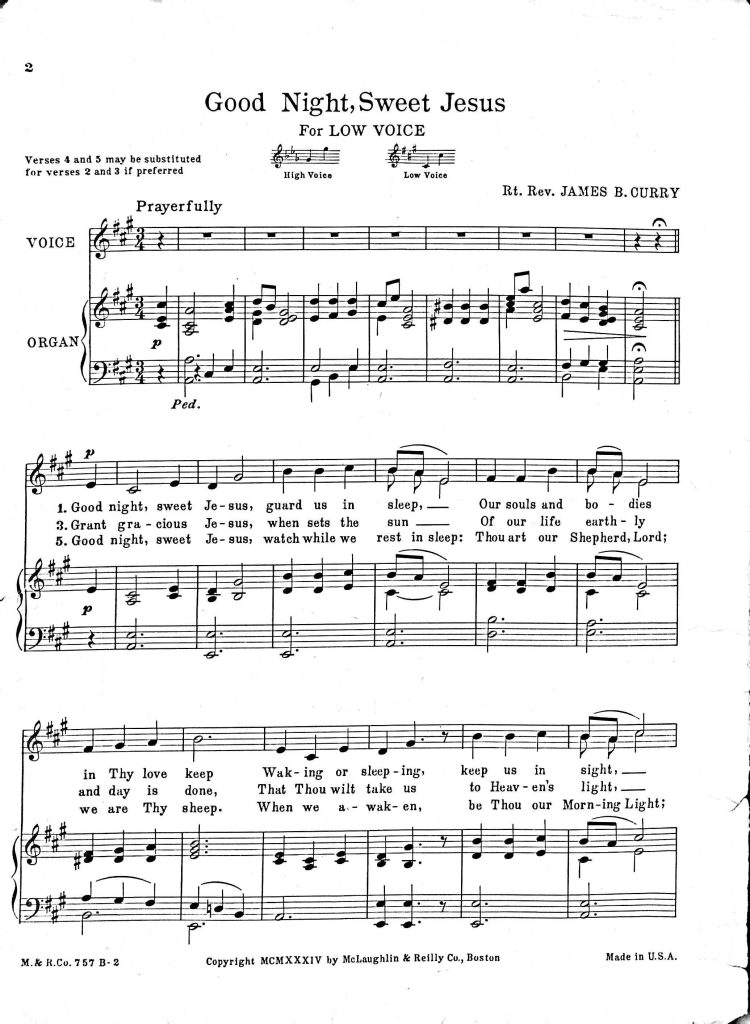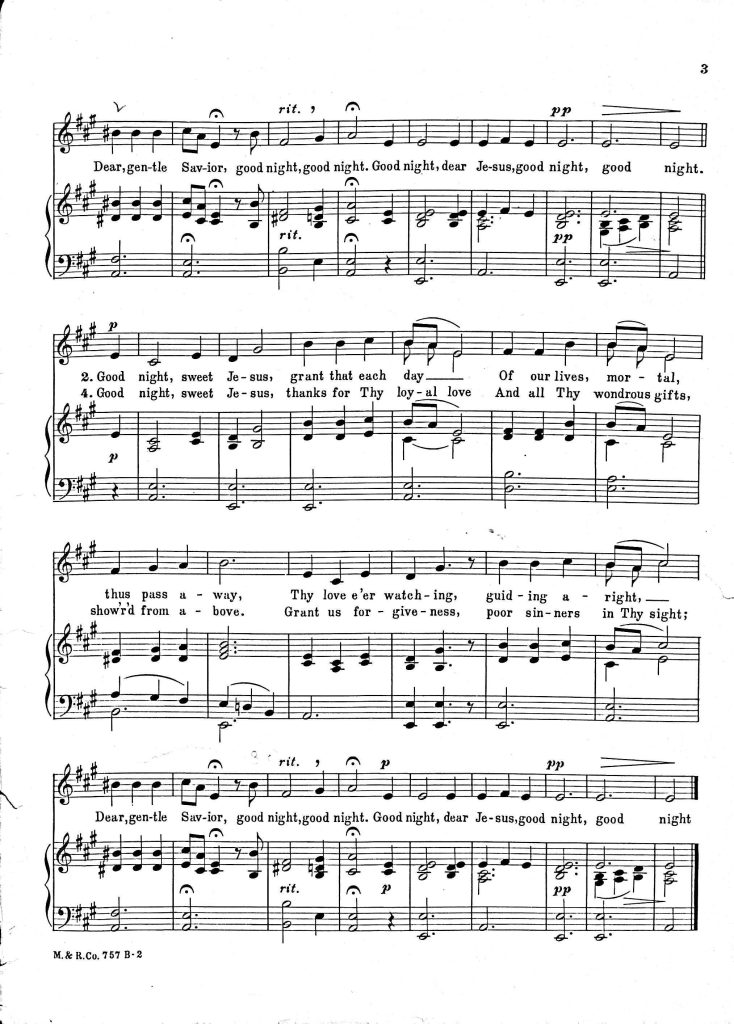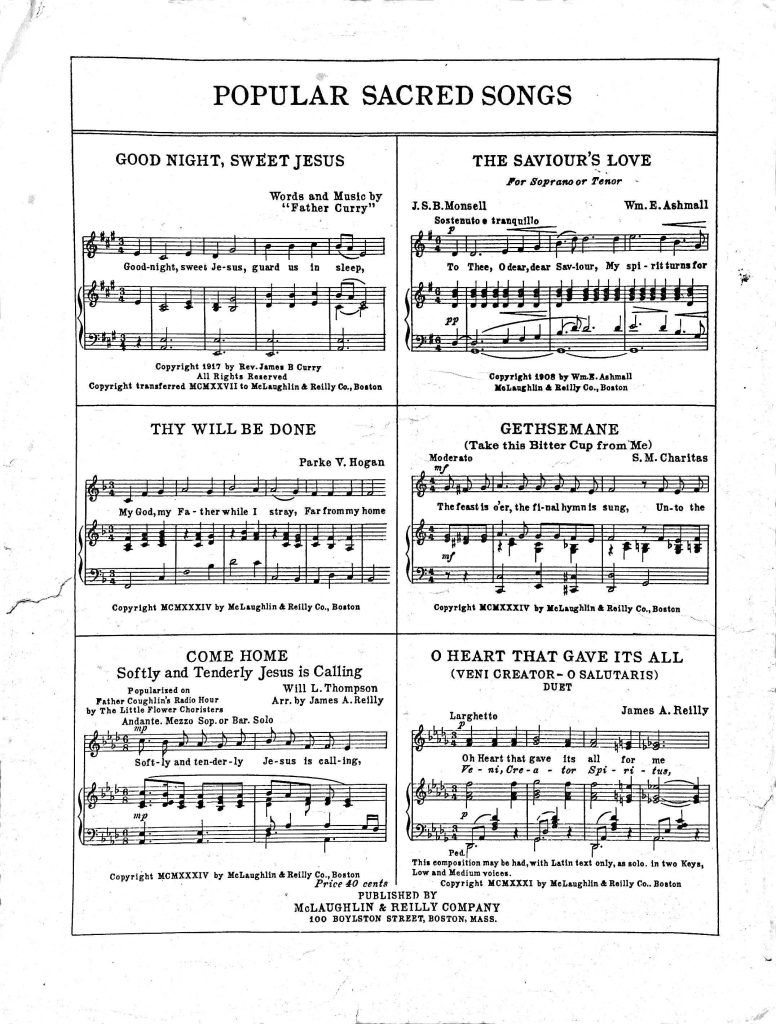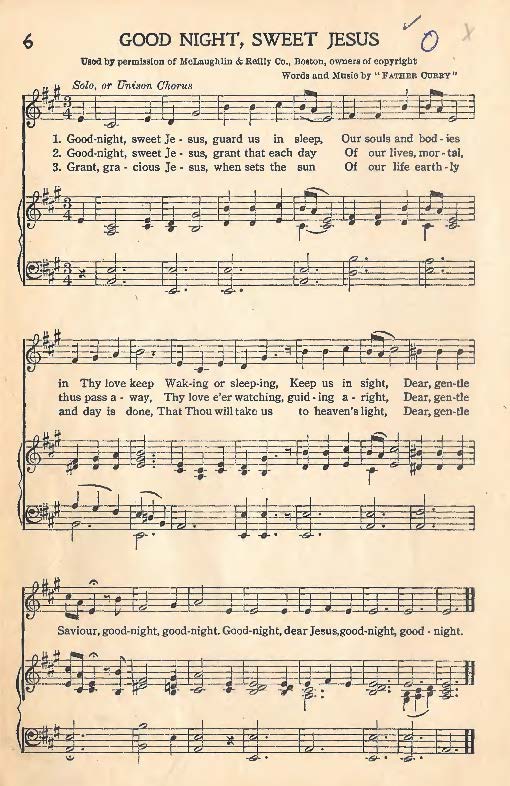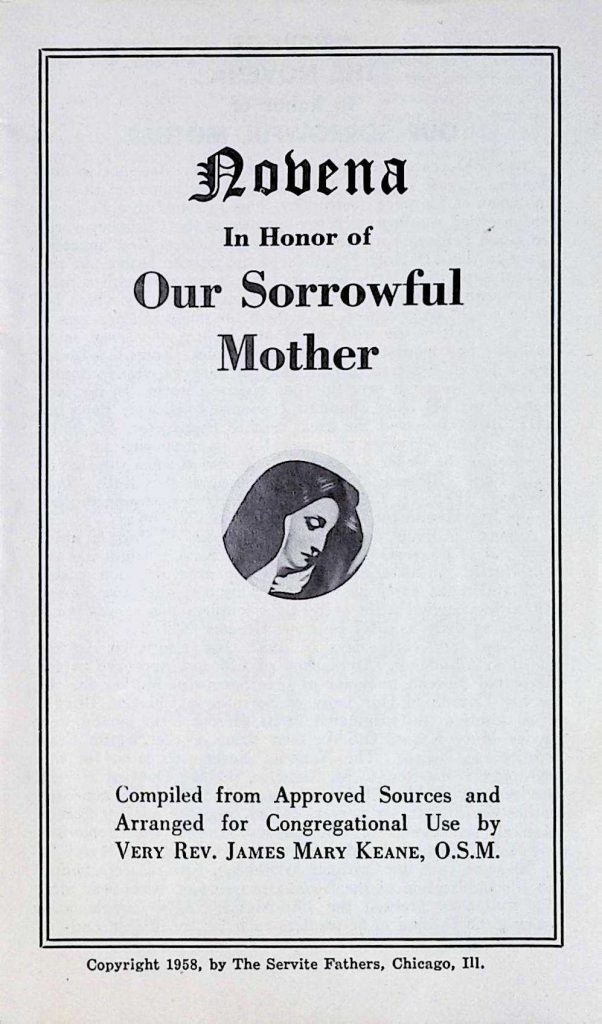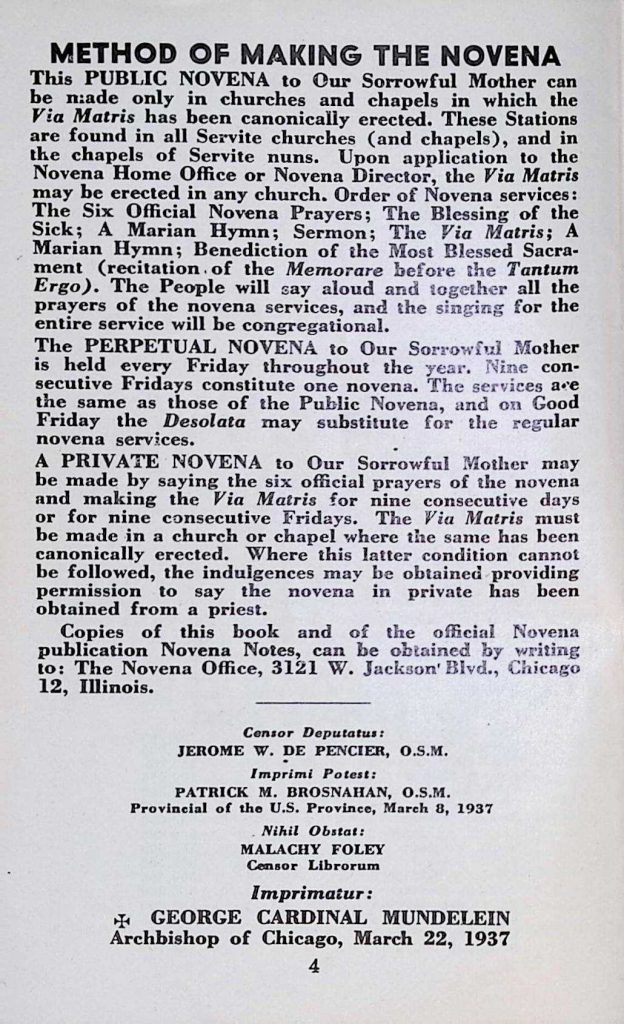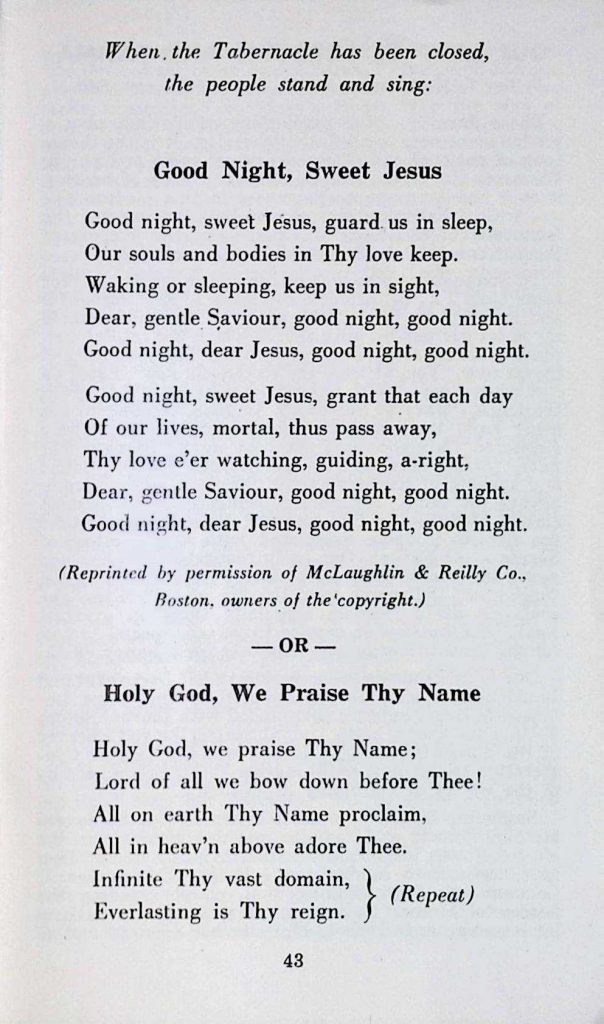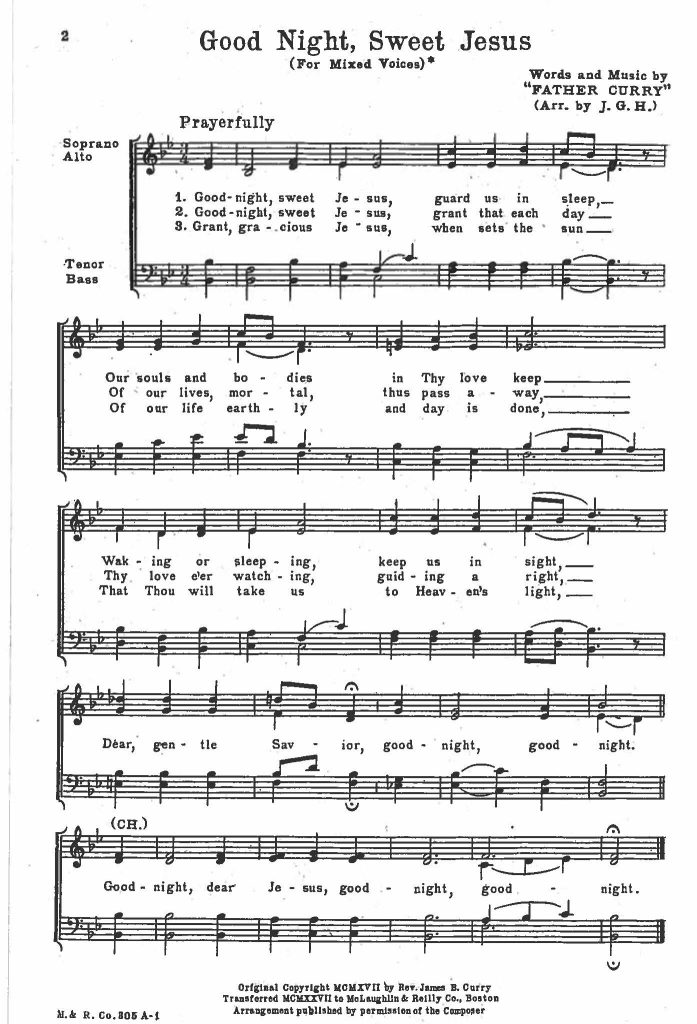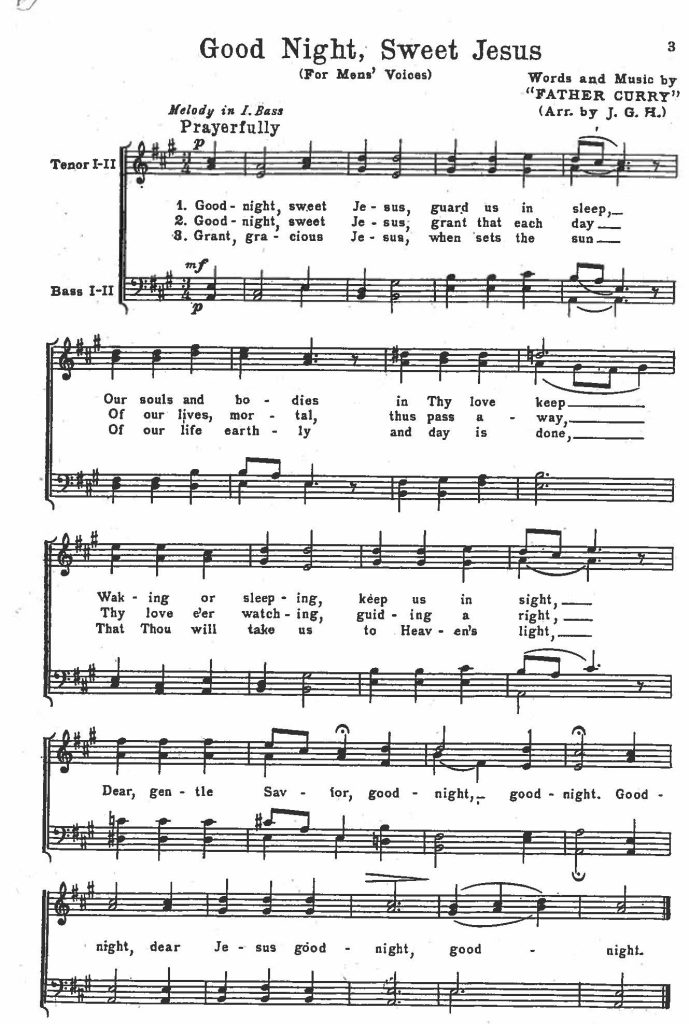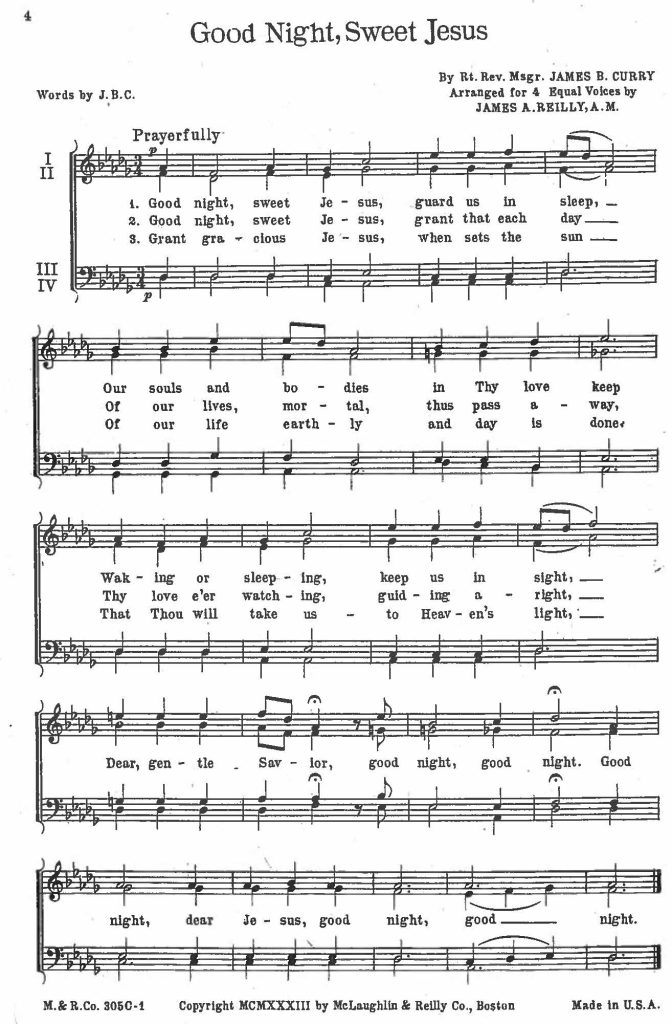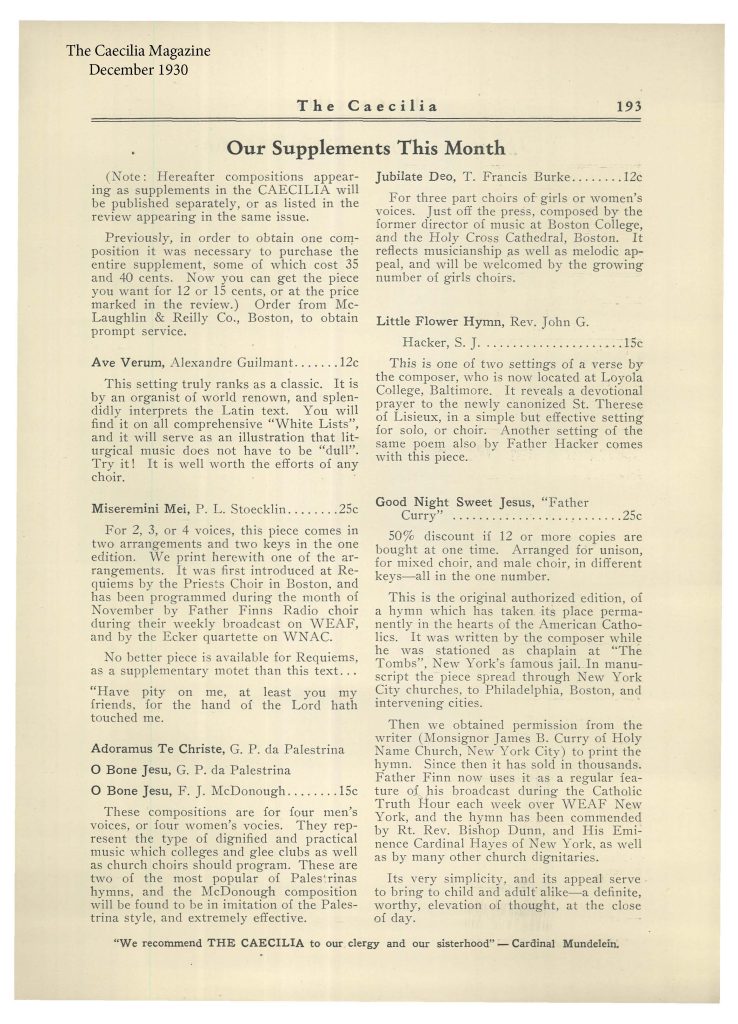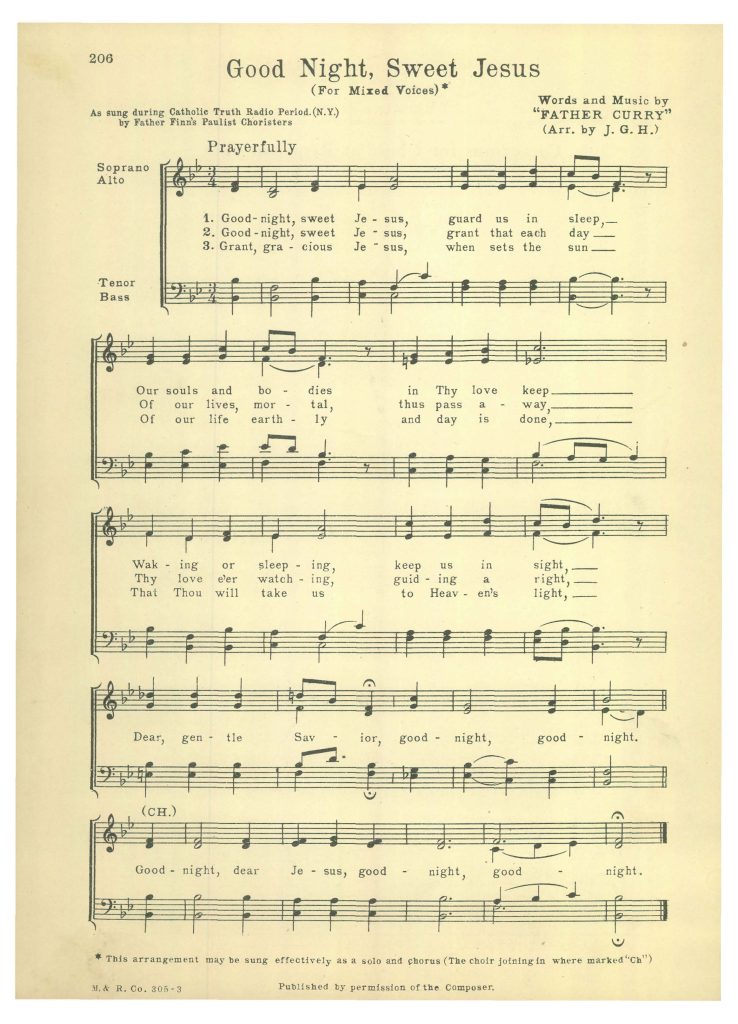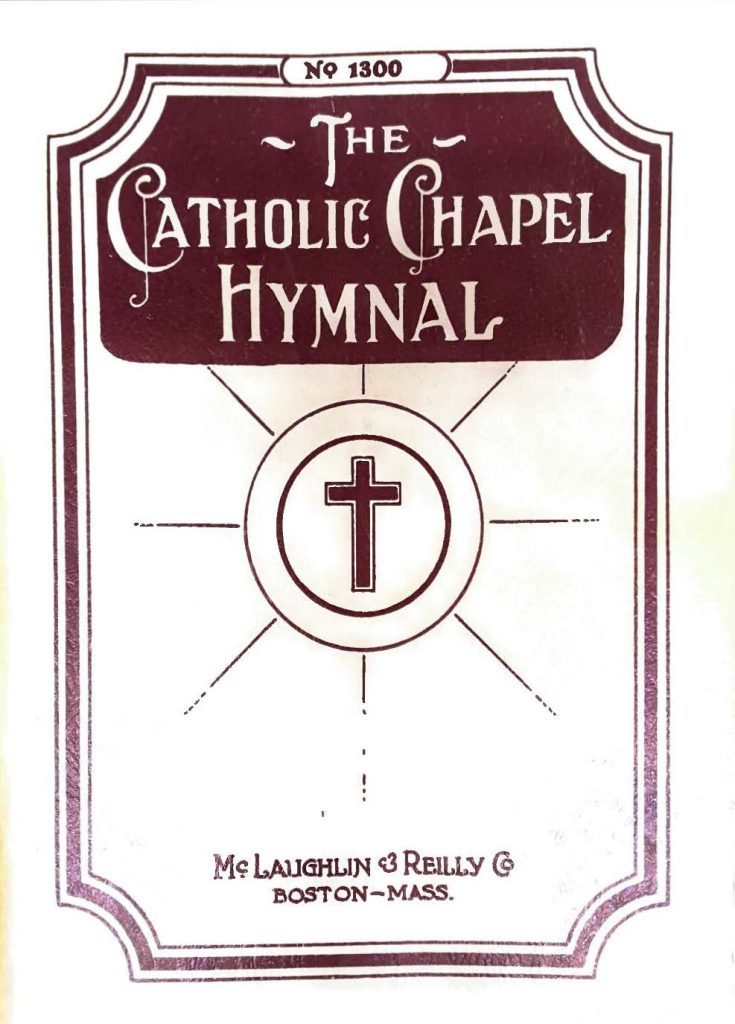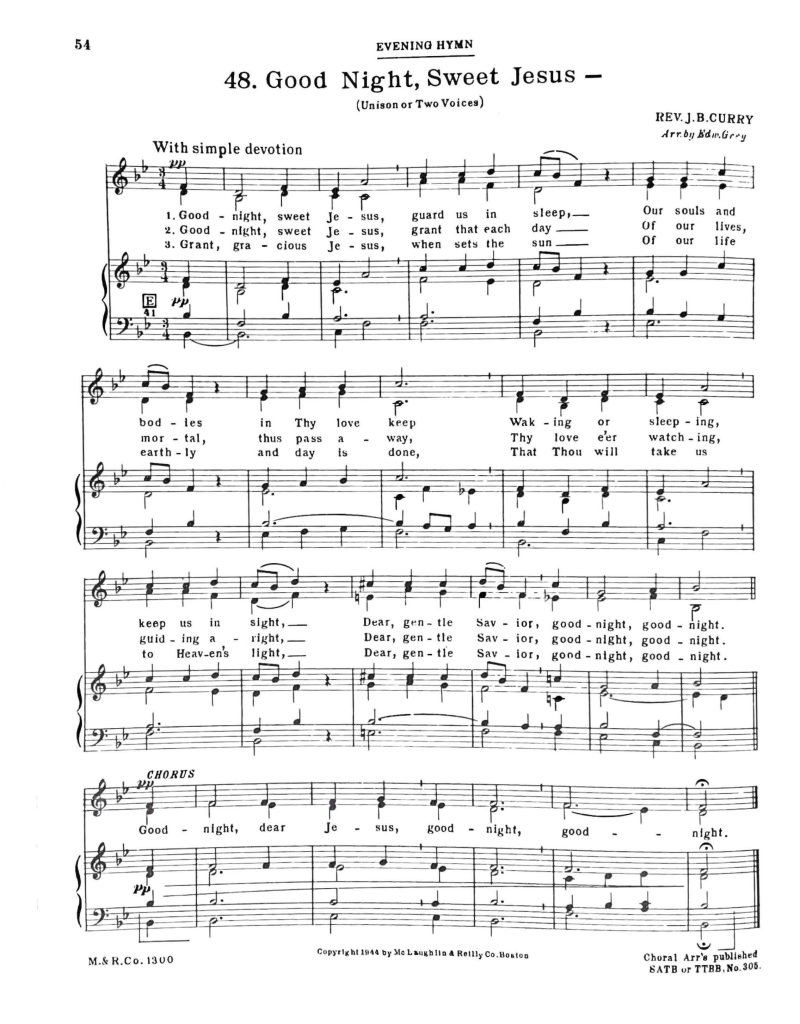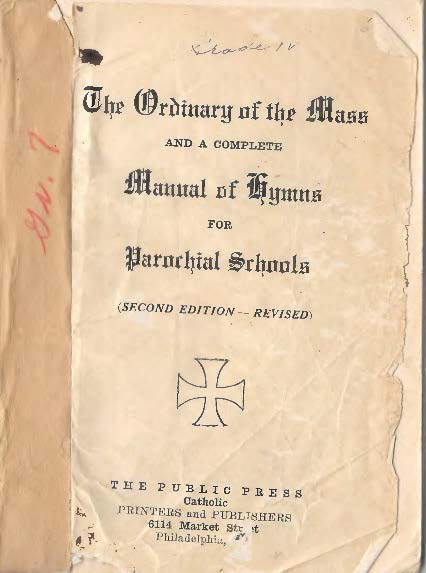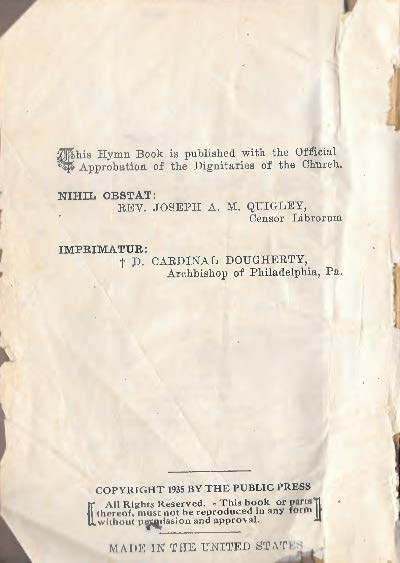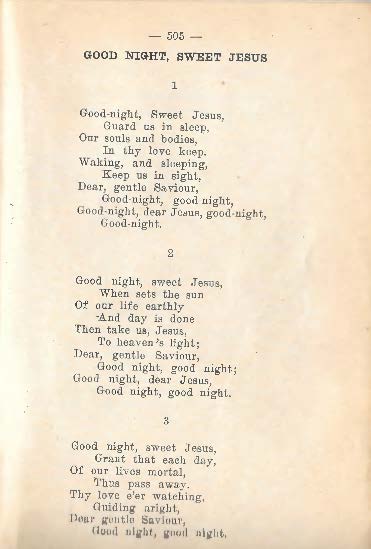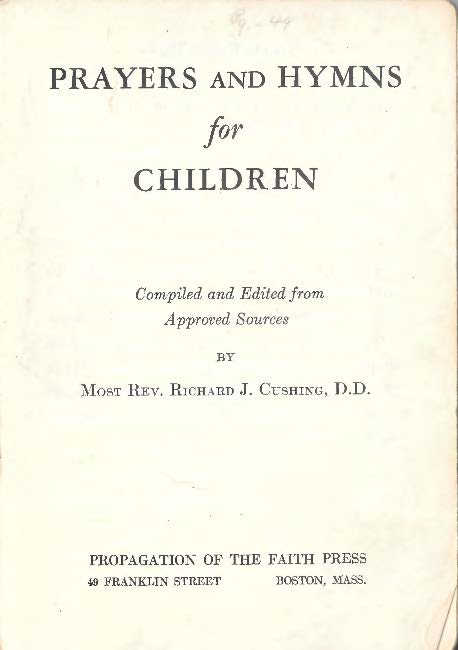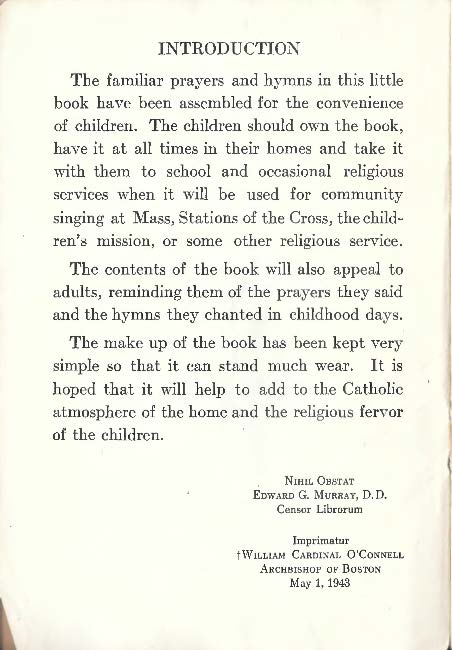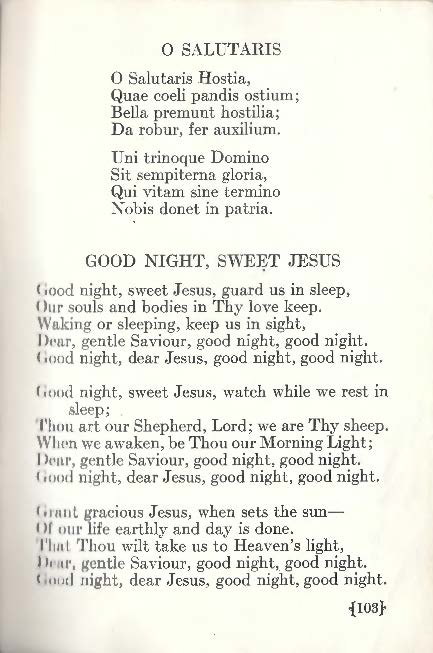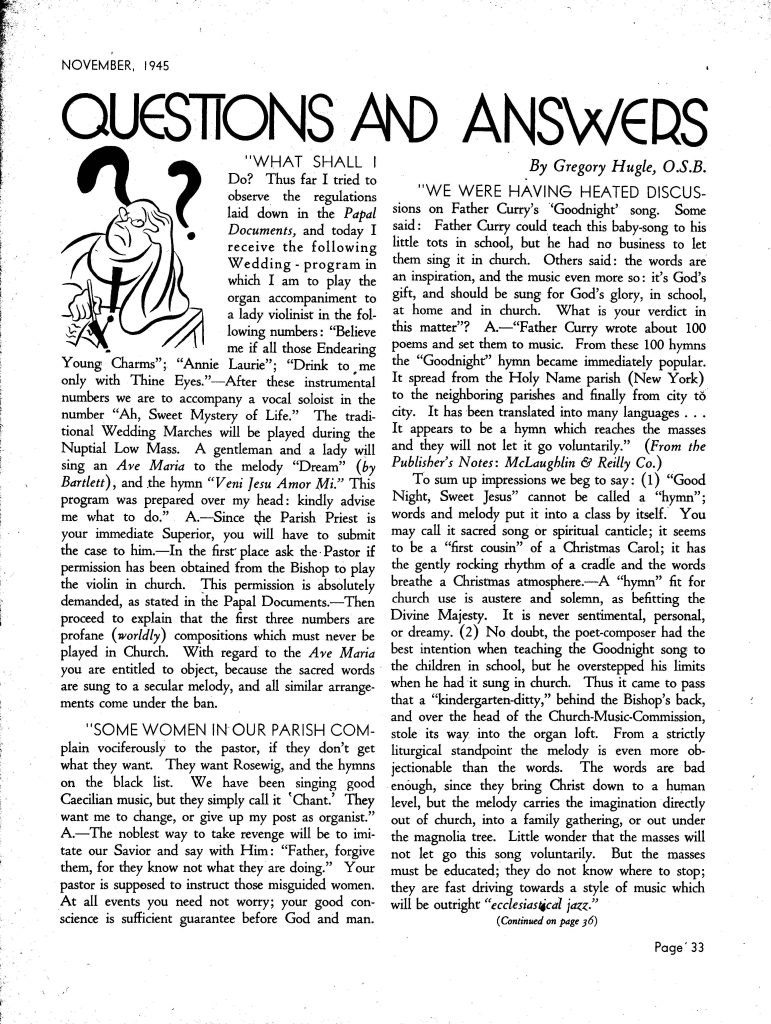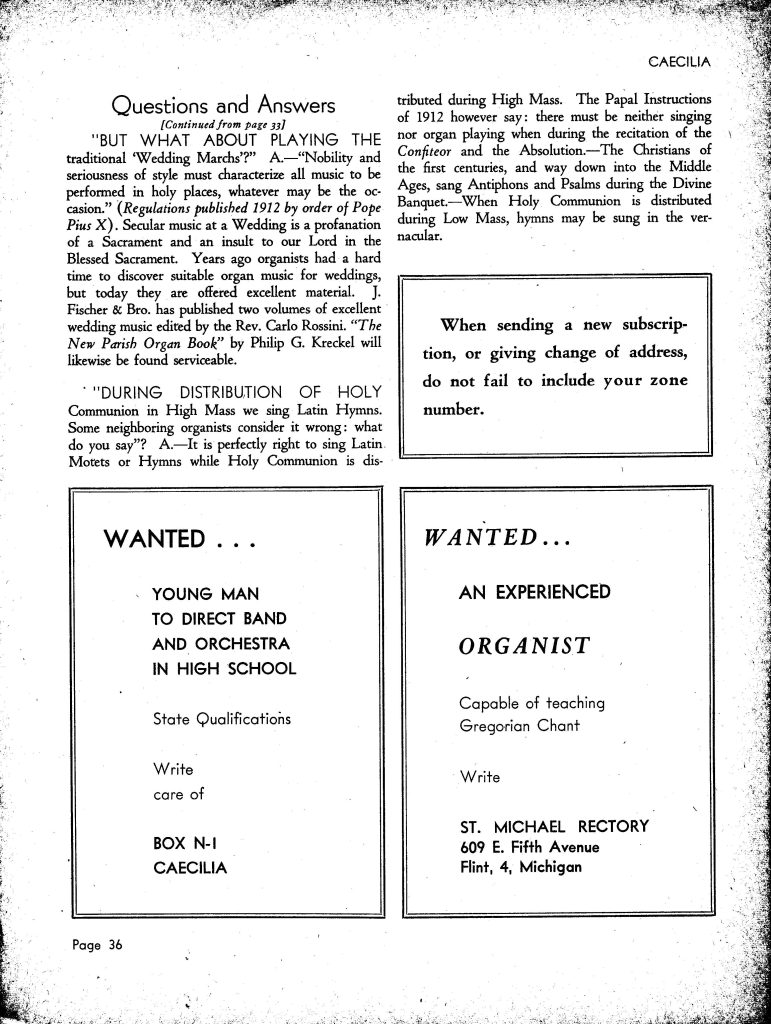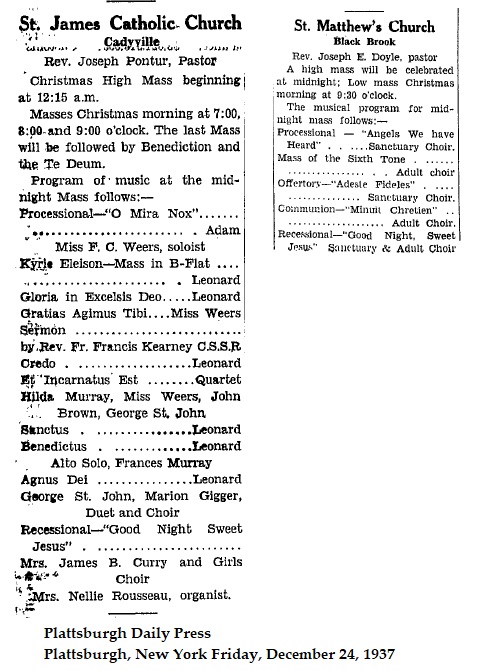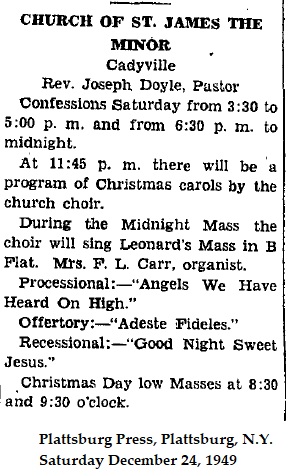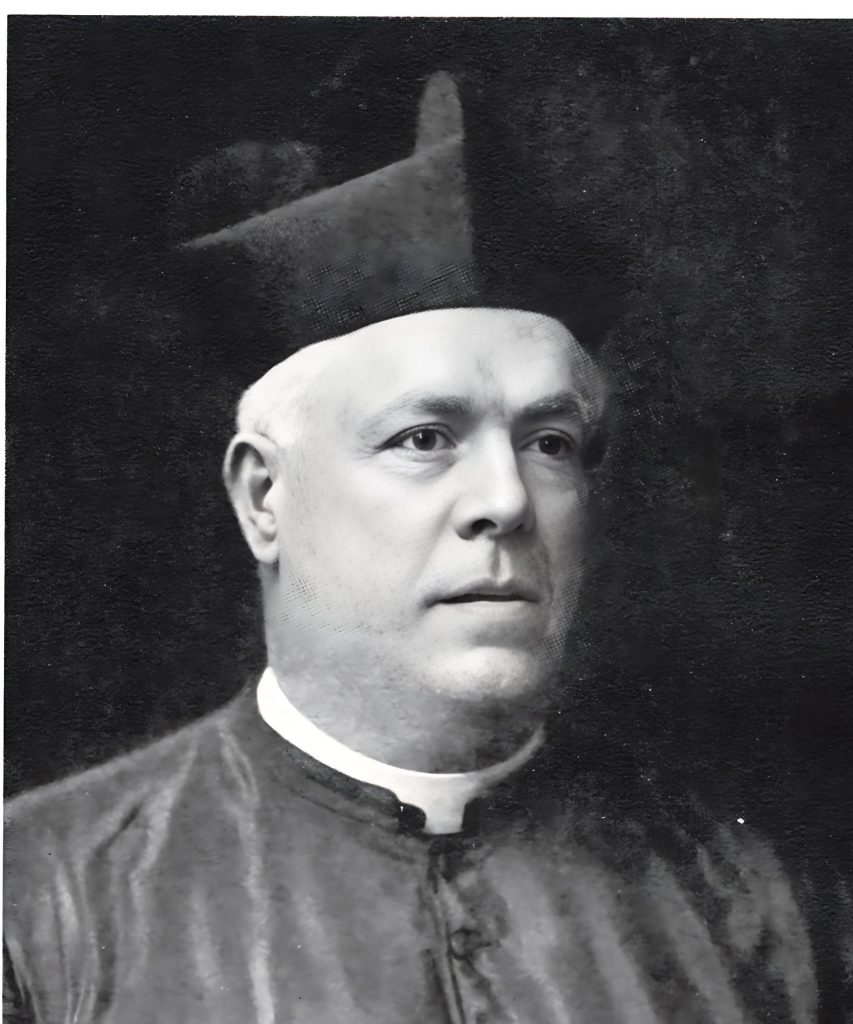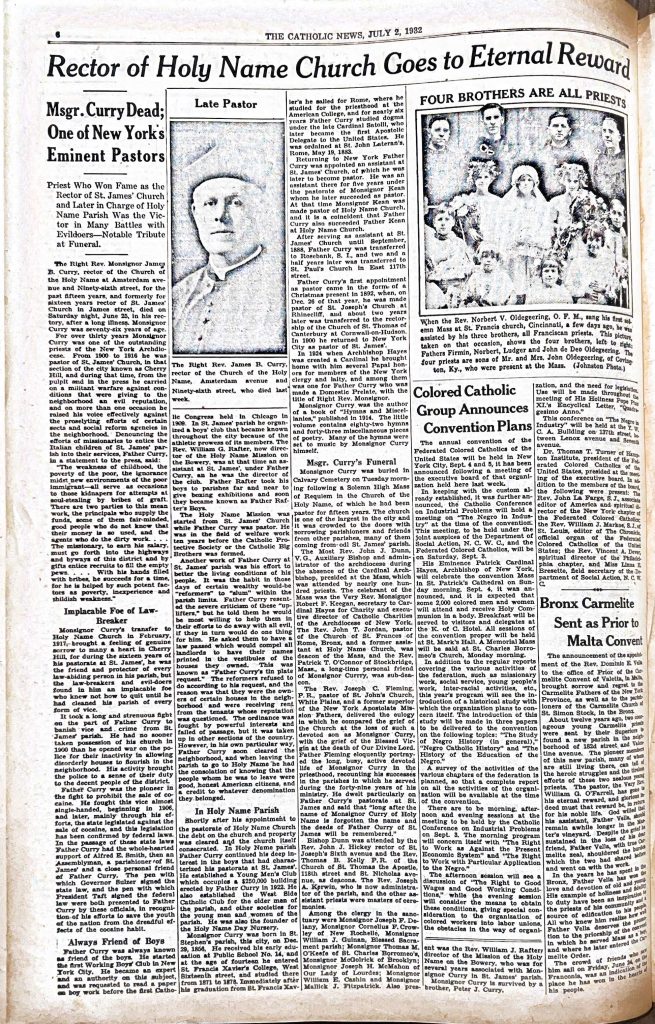This hymn was written and composed by Right Reverend Monsignor James B. Curry during his chaplain days at The Tombs, a colloquial name given to New York’s famous city jail in Lower Manhattan. James Curry was born in St. Stephen’s Parish of New York City on December 29, 1856. He received his early education at Public School No. 14 (Stapelton, Staten Island), and at the age of fourteen, he entered St. Francis Xavier’s College located on West Sixteenth Street and studied there from 1871 to 1878.
After graduation, he sailed to Rome, where he studied for the priesthood at the American College, and for six years Father Curry studied dogma under the late Cardinal Satolli (1839-1910), who later became the first Apostolic Delegate to the United States. Father Curry was ordained on May 19, 1883 at St. John Lateran’s, Rome. Father Curry returned to New York and served five years as an assistant under Monsignor Kean and in 1888, he was transferred to Rosebank, a neighborhood in northeastern Staten Island where he served for two and a half years. He was later transferred to St. Paul’s Church located on East 117th street.
His first appointment as pastor came a day after Christmas in 1892, for St. Joseph’s Church in Rhinecliff, and two years later was transferred and appointed pastor to the Church of St. Thomas of Canterbury. In 1900, he returned to New York, and he was appointed pastor of St. James Church in a section of the city known as Cherry Hill. During his pastorate at St. James’, Father Curry became a staunch defender against the proselyting efforts of certain sects and social reform agencies in the neighborhood. He carried out what some called a militant warfare against the efforts of missionaries like Fritzi Rice to entice the Italian children of St. James’ parish into his services of thievery. Father Curry was also a pioneer in the fight against the sale of cocaine. (Click on the image to enlarge)
For his efforts to protect the youth of the nation and particularly those of Cherry Hill, he was presented with a document of the state law signed by then Governor Sulzer, and then by President William Taft who signed into federal law, prohibitions against the sale of cocaine, also known as the Harrison Act.
In 1919, Father Curry was transferred to Holy Name Church located at Amsterdam Ave and Ninety-sixth street where served until his death. In 1924, Archbishop Hayes was elevated to Cardinal and presented several Papal honors for members of the New York clergy and laity, and among them was one for Father Curry who was made a Domestic Prelate, with the title of Right Reverend Monsignor. During his time as pastor of Holy Name Church, Monsignor Curry continued his fight against the criminal efforts to enlist young boys into a life of crime by establishing a Young Men’s Club, the West Side Catholic Club for older men, and other societies for the young men and women of the parish. He also founded the Holy Name Day Nursery in Manhattan. The Holy Name Day Nursery opened in 1922 to care for pre-school children whose mothers were working outside of the home.
In addition to his fight against crime, poverty, and drugs in his parishes, Monsignor Curry was a musician and poet. He worked tirelessly to teach his school children the truths of the Holy Catholic Church through his poetry and his music. He published a hymnal of all original compositions in 1913 called THE CATHOLIC’S CHORAL and it was referred to by many as Father Curry’s Hymn Book. It was later published by the McLaughlin & Reilly Co., of Boston, Mass., in 1927. This collection of 101 original devotional hymns is somewhat rare and hard to find. (Click on the image to enlarge)
Monsignor Curry is best known for his hymn Good Night, Sweet Jesus. The hymn was sung by the school children of his parish for some time, and as word spread, adjoining parishes began requesting copies of the hymn. Sheet music was available through McLaughlin and Reilly, Co., in 1917. Very soon the hymn was being sung in Philadelphia and Boston. From there it spread throughout the country with thousands of copies being distributed.
His Eminence Cardinal Hayes (1867-1938) and Bishop Dunn (1870-1933) of New York and many other church dignitaries paid special tribute to the hymn hailing it as the most effective closing hymn for evening services ever written. Radio programs of the 1930s and 1940s including Father Coughlin’s Hour, Father Finn’s Catholic Truth Period, Edward MacHugh’s Gospel Hour concluded their radio programs by singing this hymn. For Catholic’s living before the age of television, tuning into these radio programs was extremely popular and included an audience of tens of millions of Americans every week. (Click on any image to enlarge)
As indicated above, the hymn was often used at the end of Benediction services, and as a closing hymn for Novena prayer groups. An example of a novena prayer book is the Novena in Honor of Our Sorrowful Mother. The small prayer book measures about 4 inches wide and 6 inches tall and has 48 pages. It outlines the origins of the novena, a number of prayers to the Sorrowful Mother, the Station of the Cross, and a collection of twenty Marian hymns, hymns used for Benediction of the Blessed Sacrament including O Salutaris Hostia, Tantum Ergo, The Memorare, Good Night, Sweet Jesus, and Holy God We Praise Thy Name.
Several different arrangements of the hymn were composed including SATB, TTBB, and an arrangement for four equal voices by James A. Reilly, of McLaughlin & Reilly Co., Boston.
The hymn was also featured in the December 1930 edition of the well-known Catholic magazine, The Caecilia Magazine. However, in the following decade, the same hymn would be condemned.
The hymn appeared in THE CATHOLIC CHAPEL HYMNAL from 1944 thru 1968. The contents of the CATHOLIC CHAPEL HYMNAL were suggested and approved by 118 Catholic Chaplains in the Armed Forces during World War II. A survey was conducted by McLaughlin & Reilly Co., of Boston, and the chaplains furnished the title of hymns best known to servicemen and women as indicated by spontaneous congregational participation during chapel services.
Additionally, I found two other hymn books that featured the hymn. These are THE ORDINARY OF THE MASS and a Complete MANUAL OF HYMNS for PAROCHIAL SCHOOLS, and PRAYERS and HYMNS for CHILDREN. Both of these hymn books measure about 4 inches wide by 6 inches tall and are word only editions.
The ORDINARY OF THE MASS hymn book was published by THE PUBLIC PRESS in 1935 and contains 527 pages with Approbation approval by the Censor Librorum and Archbishop of Philadelphia, Pa.
The PRAYERS and HYMNS for CHILDREN hymn book was compiled and edited by the Most Reverend Richard J. Cushing, D.D., (1895-1970), who would later serve as Archbishop of Boston from 1944 to 1970. He was elevated to Cardinal in 1958. The hymn book was published by the Propagation of the Faith Press in 1943 and consist of 104 pages with Approbation by the Censor Librorum and then Archbishop of Boston William Cardinal O’Connell (1859-1944). I would like to point out that Monsignor Curry and Cardinal O’Connell were classmates at the American College in Rome.
As the hymn’s popularity spread among Catholic parishes across the country and Protestant missions, so did the critics. Various contributors to the Caecilia Magazine, a very well-respected periodical among Catholic musicians and laity, were disgusted with the hymn often referring to it as drippy sentimentality unworthy of the Church’s dignity, and other forbidden wishy-washy sentimental music. In 1945, an unfavorable review by a recurring contributor of the Caecilia Magazine, Dom Gregory Hugle, O.S.B., appears in the second column of the November issue QUESTIONS AND ANSWERS. (Click on any image to enlarge)
My research also led me to find some news paper articles listing Christmas Eve music programs from The Plattsburg Daily Press that indicate the hymn Good Night, Sweet Jesus was used as a recessional hymn for the Mid-night High Mass. Also, from The Journal News in NYACK, New York, the St. Cecilia Choral Society presented a program of liturgical music followed by Benediction to the parishioners of St. Peters where the hymn was used as a closing hymn.
The Right Reverend Monsignor James B. Curry died in his rectory, after a long illness on June 25, 1932, he was seventy-six years old. His funeral Mass was attended by many Bishops, nearly one hundred priests, and parishioners who filled the Church of the Holy Name out to the doors.
Reflection
The verses are simple with prayerful petitions, asking Jesus to guard us, to keep us safe, to watch over us, to guide us, and take us to heaven when our earthly life is done. Today we no longer have Friday or Saturday night Novena Prayer Groups who conclude their prayer services with Benediction of the Blessed Sacrament and the hymn Good Night, Sweet Jesus. I believe this hymn can still be effective today just as it was those many years ago. For a good dose of spiritual nourishment, take a moment to reflect on the verses while listening to the recordings below and I think you’ll agree that it is a beautiful prayerful hymn.
Good night, sweet Jesus, guard us in sleep,
Our souls and bodies in Thy love keep
Waking or sleeping, keep us in sight,
Dear gentle Savior, good night, good night.
Good night, dear Jesus, good night, good night.
Good night, sweet Jesus, grant that each day
Of our lives, mortal, thus pass away,
Thy love e’er watching, guiding aright,
Dear gentle Savior, good night, good night.
Good night, dear Jesus, good night, good night.
Grant gracious Jesus, when sets the sun
Of our life earthly and day is done,
That Thou wilt take us to Heaven’s light,
Dear gentle Savior, good night, good night.
Good night, dear Jesus, good night, good night.
Good night, sweet Jesus, thanks for Thy loyal love
And all Thy wonderous gifts, show’r’d from above,
Grant us forgiveness, poor sinners in Thy sight
Dear gentle Savior, good night, good night.
Good night, dear Jesus, good night, good night.
Good night, sweet Jesus, watch while we rest in sleep:
Thou art our Shepherd, Lord; we are Thy sheep.
When we awaken, be Thou our Morning Light.
Dear gentle Savior, good night, good night.
Good night, dear Jesus, good night, good night.
The hymn has also been recorded by various artists over the years including Perry Como, George Beverly Shea, The Slaves of the Immaculate Heart of Mary, and others.
Below is a recording performed by Father Finn’s The Paulist Choristers in 1942 from a collection of Catholic Novena Hymns directed by Edward Slattery. Father William J. Finn (1881-1961), was the founder and conductor of The Paulist Choristers, a volunteer group boys and men initially organized for the Paulist Church in Chicago. The choir became quite famous singing in most metropolitan cities in America and most of the capitals of Europe. In 1918, Father Finn was transferred to New York and brought with him a good part of the boys choir. The Catholic Hour radio program was inaugurated by the Paulist Choristers and was broadcast from the Paulist Church in New York, every Sunday night from 6 to 6:30 over the WLWL, a National Broadcast Chain radio station. Father Finn’s Paulist Choir was most famous for its rendition of Polyphonic music.
Also, with permission from Peter Meggison, producer of The Devotional Hymns Project, a more recent recording made in 2013 by the Singers from St. Joseph Cathedral, Manchester, New Hampshire.

